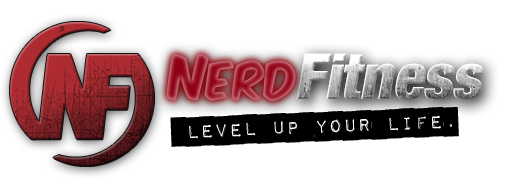

Timothy
Members-
Posts
7 -
Joined
-
Last visited
About Timothy
-
Rank
Newbie
- Birthday 05/31/1993
Retained
- Newbie
-
http://startingstrength.com/index.php/site/platform_managing_calluses
-

Stronglifts 5X5: Bodybuilding or functional strength?
Timothy replied to emclinux's topic in Strength Training!
For situps and pushups, you cannot beat the frequency method. Google and come up with some programs. Basically, find your max amount you can do, that 20% and do 5 sets of those a day. Relatively easy and it seriously increases your numbers fast. Works for pullups too if you need that. -
If you can't figure out you might was well ask the man himself. www.startingstrength.com Submit a question to Mark Rippetoe Q&A and he'll answer it (if said question isn't stupid) usually within a day. I recommend the search function first (as described in the site's forum) before asking the question, unless you want to piss him off. Check out the forum and site, great resource.
-

What The Hell Does Milk Do For Muscle Gain ???
Timothy replied to bblanchette's topic in Strength Training!
It isn't just about the calories, it has Insulin-like Growth Factor 1 (IGF-1). Processed dairy products (cheese, yogurt, etc.) do NOT contain IGF-1. That's why milk specially is recommended. -
I'd be willing to bet that is the problem. Test it out for a few squat workouts and get back to us. And it is good to hear you don't want to use the pad.
-
After re-reading the first post another thought came to mind. Since you said it happens when you are squatting heavy, your chest might be dropping at the bottom of the squat. This can happen if you go ass to ankles, or if the weight is just too much. When your chest drops, your shoulder blades fall forward. Think about putting your chest up and then about your blades back. It is nearly the same motion. Your form might be good going down, but if the chest is dropping at the bottom, your back muscles might be loosening up and you might be more prone to bruises.
-
It is hard to tell from the picture without knowing more about your shoulder blades and musculature but my guess is you are either squatting high-bar or are in the wrong low-bar position. Mark Rippetoe's book Starting Strength has 70 pages worth of info on low-bar squatting. He recommends you do it anyway because the great Glute-ham use, ability to add more weight, and less stress on the back. You are right; people do it without pains all the time. Powerlifters are a great example. If they were constantly injured (which is what you are unfortunately), they couldn't compete. The squat isn't and shouldn't be a painful exercise. Always good to double check your form too. Are you hands as close to your shoulders as you can get them without bending your wrists back? This tightens up the back's muscles and creates a correct shelf for the bar to sit in. All of this and more is discussed in Starting Strength. Highly recommended. If you are a visual learning, the DVD is also a great purchase. Additionally, posting a video of your form for us to critique could be beneficial. Again, we don't know how your back and shoulders are structured but we might be able to identify any critical errors that could be resulting in pain and bruising. And please, don't use the puss pad.
